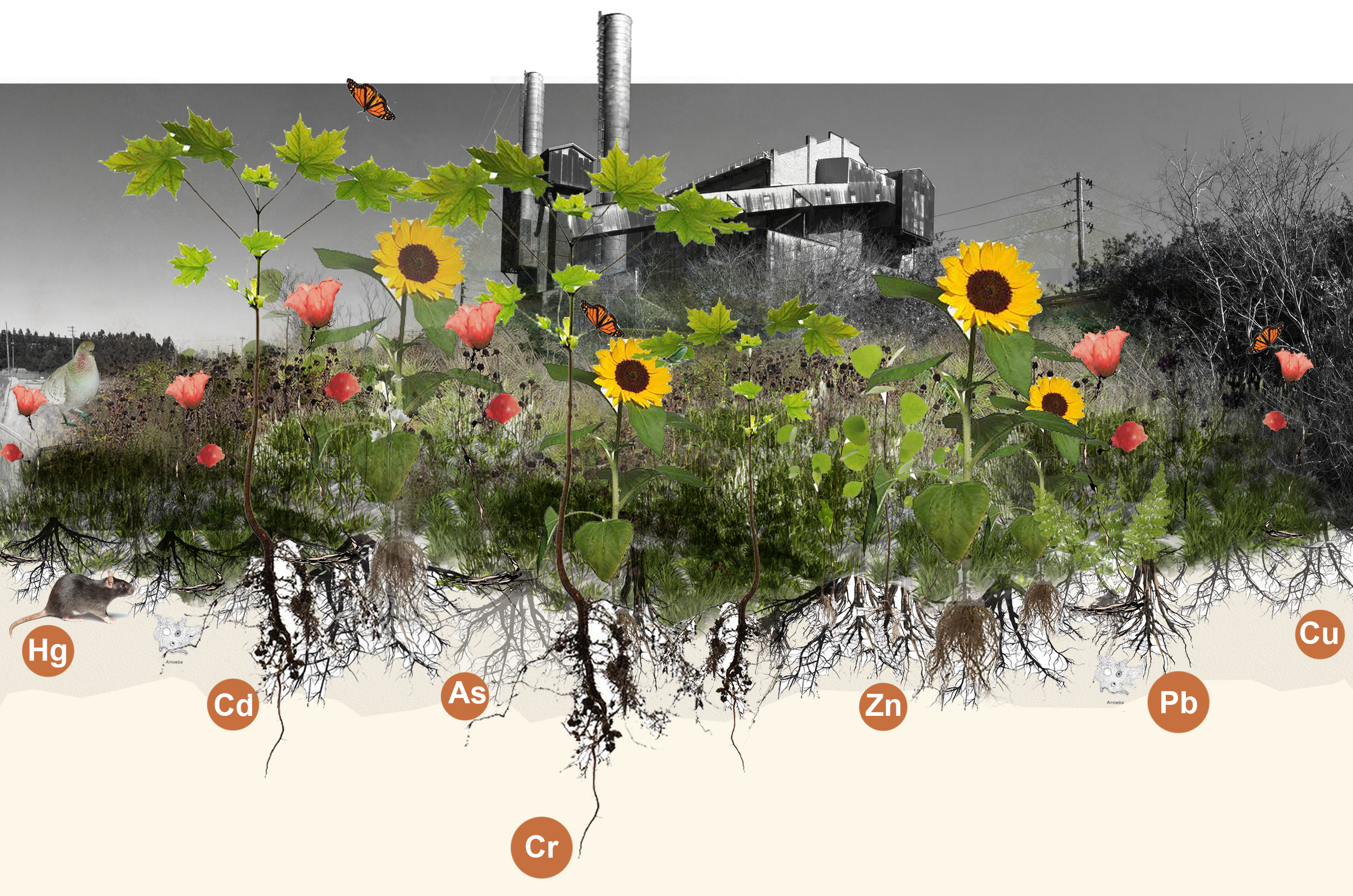PHYTOREMEDIATION PRINCIPLES
What is Phytoremediation?
Phytoremediation is the direct use of living green plants for in situ, removal, degradation, or containment of contaminants in soils, sludges, sediments, surface water and groundwater. By harnessing the natural capabilities of plants, we can remove, degrade or stabilize contaminants. It can be a low-cost, but time intensive alternative to traditional remediation on sites where toxins are present at a shallow depth. It can also be an effective approach to reducing the leaching of contaminants through soil or groundwater, and can be used in combination with other remediation techniques.
How does it work?
There are several ways in which plants are used to clean up, or remediate, contaminated sites. To remove pollutants from soil, sediment and/or water, plants can break down, or degrade, organic pollutants or contain and stabilise metal contaminants by acting as filters or traps.
Phases of Phytoremediation:
The phases of Phytoremediation include:
Phytoaccumulation:
The plants take up and assimilate contaminants
Phytovolatilization:
The plants volatilize the contaminants into the atmosphere.
Phytodegradation:
Using enzymes, the plants degrade the contaminants within plant tissues.
Phytostabilization:
Plants may absorb and precipitate large quantities of toxic metals in soils, reducing their bioavailibility and preventing their entry into groundwater and food chains.
Rhizodegradation:
In the rhizosphere of some plants, released plant exudates and enzymes that stimulate biochemical activity enhance the biodegradation of environmental contaminants.
Conceptual Illustration of phytoremediation at WBPS, (Sooprayen. V, 2017).
UTS, (2018)



